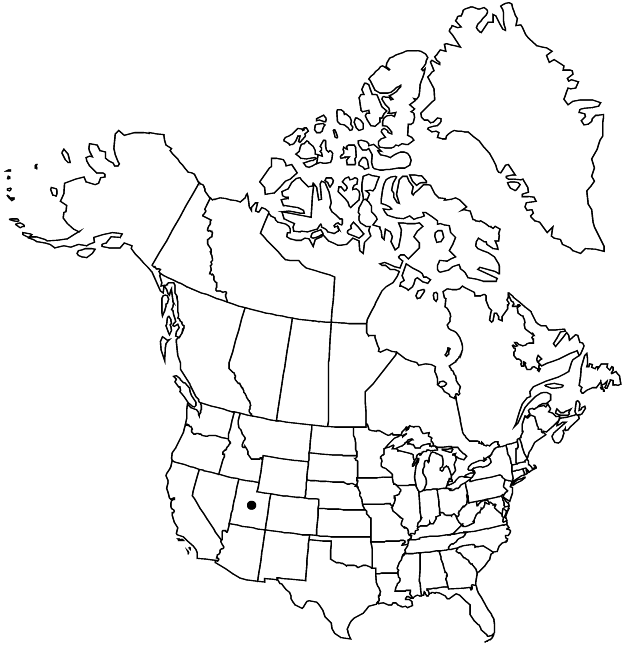Eriogonum eremicum
Phytologia 23: 165. 1972.
Herbs, spreading, not scapose, 2.5–4.5 × 1–2.5 dm, glabrous, grayish. Stems spreading, without persistent leaf bases, up to 1/4 height of plant; caudex stems absent; aerial flowering stems erect, slender, solid, not fistulose, 0.5–2 dm, glabrous, pubescent among leaves. Leaves basal, 1 per node; petiole 1–2.5 cm, tomentose; blade ovate to round, 1.2–2(–2.5) × 1–1.7(–2) cm, tomentose on both surfaces, margins plane. Inflorescences cymose, 1.2–2.5 × 1–2 dm; branches dichotomous, glabrous; bracts 3, scalelike, triangular, 1–3 mm. Peduncles absent. Involucres (1–)2–5 per cluster, turbinate, 2.5–4(–4.5) × 2–2.5 mm, glabrous; teeth 5, erect, 0.4–0.8 mm. Flowers 2.5–3 mm; perianth white, glabrous; tepals connate proximal 1/5, monomorphic, obovate; stamens exserted, 2.5–3.5 mm; filaments pilose proximally. Achenes light brown to brown, 2.5–3 mm, glabrous.
Phenology: Flowering Jun–Sep.
Habitat: Gravelly dolomite flats, saltbush communities, pinyon-juniper woodlands
Elevation: 1600-2100 m
Discussion
Of conservation concern.
Eriogonum eremicum is the dolomitic counterpart to the silty-clay species E. batemanii of eastern Utah and western Colorado. The limestone wild buckwheat is known from a small area in southwestern Millard County and adjacent northern Beaver County of western Utah.
Selected References
None.
